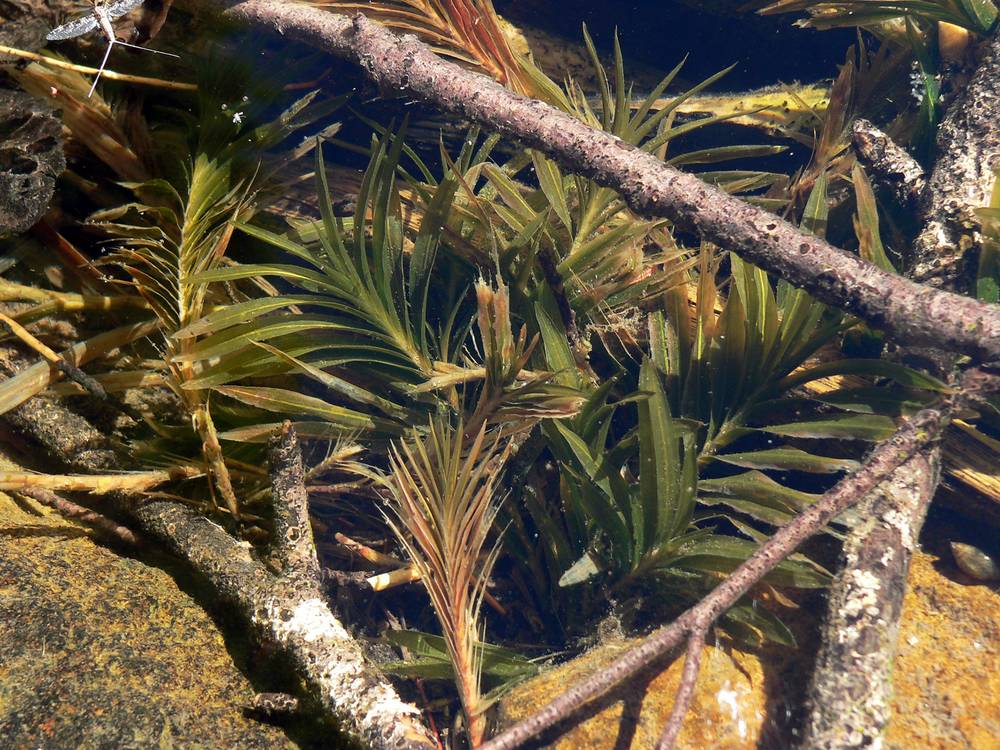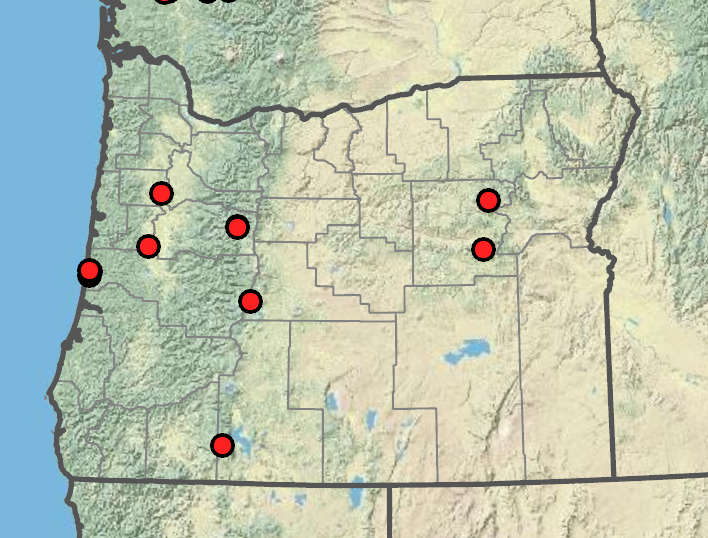Potamogeton robbinsii
Robbins' pondweed
terete; to 100 cm; nodal glands absent.
submersed, conspicuously 2-ranked, sessile; more or less sti?;
blades attached to lower 25% of petiole;
stipules ligulate, 0.5– 2 cm, fibrous, shredding at tip;
tip obtuse;
blades linear to lanceolate, 20–70(120) × 3–4(8) mm;
base rounded, with basal lobes (auricles);
margins minutely spinulose to serrulate;
tip acute; lacunae absent;
veins 20–60.
often branched;
peduncles axillary; erect, 30–50(70)mm;
spikes moniliform, 7–20 mm.
stipitate, obliquely obovoid; turgid, 3–4(5) × 2(3.3)mm, brown, dorsally and laterally keeled;
beaks erect, recurved at tip, 0.7–0.9 mm.
Potamogeton robbinsii
Shallow to deep water of ponds, lakes and slow-flowing rivers. 50–2400 m. BW, Casc, WV. CA, ID, WA; north to AK, northeast to Nunavut, east to Prince Edward Island. Native.
Potamogeton robbinsii is our only species with branched inflorescences and auriculate leaf blades. It flowers only rarely.
Nick Otting, Richard Brainerd, Barbara Wilson
- Local floras:
BC,
CA,
OR,
WA
- Local Web sites:
CalFlora,
CalPhotos,
Flora NW,
PNW Herbaria
WildflowerSearch
iNaturalist (observations)
USDA Plants Database
- LBJ Wildflower Center
- SEINet
- Plants of the World Online
- Encyclopedia of Life
- Wikipedia
- Google Image Search



